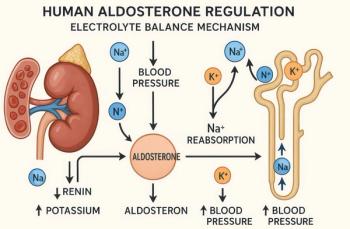
Porphyria Cutanea Tarda in a Construction Worker
For several months, a 55-year-old white construction worker experienced intense burning of the skin when exposed to direct sunlight. In addition, multiple fragile blisters appeared on the dorsa of his hands and arms; these rapidly developed into crusted, superficial erosions.
For several months, a 55-year-old white construction worker experienced intense burning of the skin when exposed to direct sunlight. In addition, multiple fragile blisters appeared on the dorsa of his hands and arms; these rapidly developed into crusted, superficial erosions (A). Recent laboratory results included high normal hemoglobin/ hematocrit levels, a negative toxicology screen, and normal liver function tests; an enzyme-linked immunosorbent assay was positive for hepatitis C virus antibody, and serological tests were negative for other viral causes of hepatitis. A freshly voided urine sample demonstrated a distinct red-orange color when exposed to black light (UVA), compared with a normal control urine specimen (B). This finding was consistent with porphyrinuria.
A tentative diagnosis of porphyria cutanea tarda was made. A subsequent 24-hour quantitative urinary porphyrin study was confirmatory. Periodic phlebotomy and low-dose oral antimalarial medication were considered as therapeutic interventions. Because of concerns about the patient's availability for repeated phlebotomy sessions, he was given oral hydroxychloroquine (200 mg twice weekly). He will be followed closely for clinical and biochemical remission.
Newsletter
Enhance your clinical practice with the Patient Care newsletter, offering the latest evidence-based guidelines, diagnostic insights, and treatment strategies for primary care physicians.

















































































































































































































































































